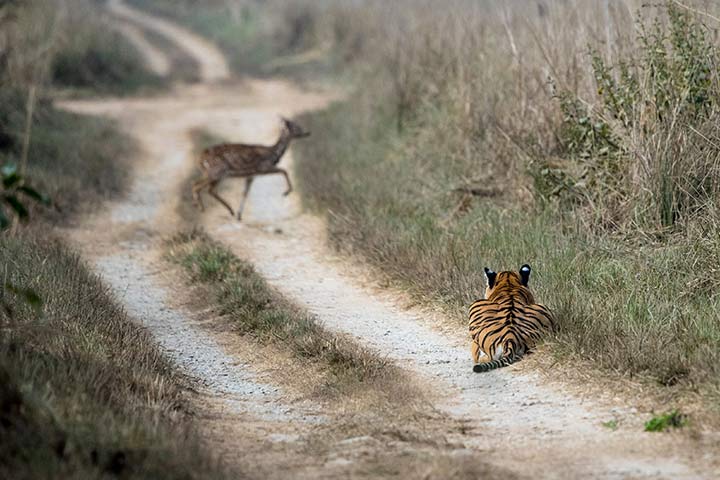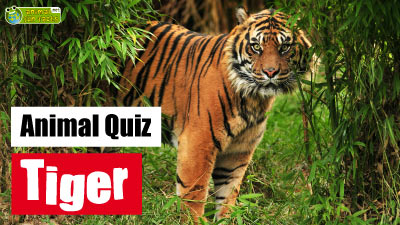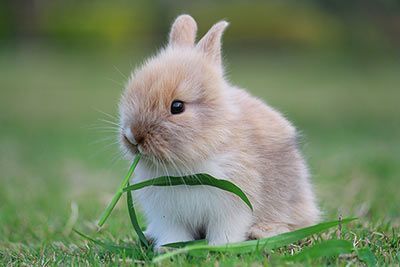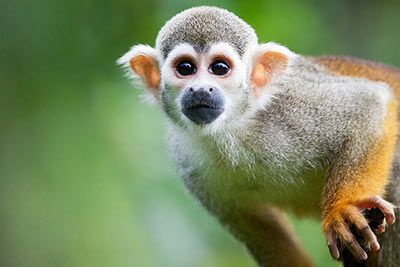Tiger
Tiger Facts
| Size | 57-78 in (145-200 cm) (body length) |
| Speed | Up to 37 mph (60 km/h) (short distance) |
| Weight | 165-674 lbs (75-306 kg) |
| Lifespan | 8-9 years |
| Food | Deer, antelopes, wild boars |
| Predators | - |
| Habitat | Asia |
| Order | Carnivore |
| Family | Cats |
| Scientific name | Panthera tigris |
| Characteristics | Big cat, black stripes |
Main Characteristics
The world's largest wild cat is the Tiger. Their most distinctive feature are the dark stripes in their golden brown fur.

Distribution and Habitat
Tigers live in tropical rainforest and mangrove forests. They can also be found in very cold areas like the Siberian tiger in the snowy areas of Russia. Today, tigers only live in eastern Russia, northern China, India and the island of Sumatra.
Life Style
Tigers are nocturnal loners. When it's dark, they roam their habitat in search of prey. They also spend a lot of time looking for a mate or resting.

Anatomy and Appearance
Size and Weight
Tigers reach a shoulder height of 26-41 inches (66-105 cm). Their body length is 57-78 inches (145-200 cm). The tail measures 35-43 inches (90-110 cm). Overall, a tiger is about 118 inches (300 cm) long. The big cats weigh up to 165-674 pounds (75-306 kg). The species vary greatly in size and weight. In addition, the female animals are always slightly lighter and smaller than the males.
The Biggest and Heaviest
The Siberian tiger is the biggest of all. Including the tail, it is about 10 feet (3 meters) long and weighs up to 674 pounds (306 kg). The second biggest ist the Bengal tiger.
The Smallest and Lightest
The smallest is the Sumatra tiger. It's length including tail is 7-8 feet (215-250 cm) and it weighs 165-308 pounds (75-140 kg).
Striped Fur
Although the tiger has a striped coat, no prey animal would mistake it for a harmless zebra. But what are the stripes good for then? It is as simple as this: In the twilight the stripes look like grass or shadows. By the way: Not only the coat is striped, but also the skin.

Diet
Tigers mainly hunt ungulates like deer, wild cattle and wild boar. Sometimes, they also prey on hares, rabbits, birds and reptiles (even crocodiles). They need about 13-17 pounds (6-8 kg) per day. However, they can eat up to 44 pounds (20 kg) in a single meal.
Behavior
Hunting Strategies
Tigers ambush their prey. They approach upwind so their scent doesn't warn them. When the big cat is within 32-114 feet (10 to 35 meters) of distance, it will sprint to try and grab the prey. To kill it, it bites in their throat or neck.

Senses and Abilities
Are They Good Swimmers?
Tigers are extremely good swimmers. They even swim across large rivers that are 3-5 miles (6-8 km) wide.
Do They Climb?
Yes, tigers can climb trees. But they rarely do so, because they're very large and heavy.
How Far Can They Jump?
Tigers have very strong hind legs. If they push off while running, they can jump 16-20 feet (5-6 meters).

Subspecies
There are six sub-species. The Bali tiger, the Javan tiger, and the Caspian tiger are no longer included in this list as they unfortunately became extinct between 1940 and 1970.
Siberian tiger (Amur tiger)
Distribution: North Korea, China, Russia
Coat: bright, long and dense
South China tiger
Distribution: China
Coat: bright colors, hardly any white
Bengal tiger
Distribution: India, Bangladesh, Nepal, Myanmar
Coat: several variations
Indochinese tiger
Distribution: South East Asia
Coat: rather dark
Malayan tiger
Distribution: Malaysia
Coat: more reddish than the Indochinese tiger
Sumatran tiger
Distribution: Sumatra
Coat: bright colors

Enemies and Threats
The biggest threat to tigers is humans. The animals are losing their habitat because more and more forests are being cleared, settlements are being built and areas are being used for agriculture. As a result, the big cats hardly find any prey. Tigers are also hunted because people are afraid of them. However, the main reason they are killed illegally is because medicine is made from their bones. Or because their fur is regarded as a hunting trophy.
How Many Tigers Are Left?
In 1920 there were still over 100,000 animals worldwide. Today, tigers are critically endangered. According to an IUCN estimate from 2021, there are only 2,600-3,900 animals left in the wild (as of November 2023; no more recent data available). Most of them live in India. In Siberia and Sumatra there are only 400 animals left. It is said that there are still 1,700-2,300 Bengal tigers alive. The South Chinese may already be extinct. As well as Bali, Java and Caspian tigers.
Reproduction
After mating it takes about 103 days until the female tiger gives birth to two to five baby tigers. After two or three months they can follow their mother. After six months they start to eat meat. At this time they are not yet able to hunt because they do not lose their milk teeth before the age of 18-20 months. The puppies stay with their mother for up to three years.
Fun Facts
Popcorn
A tiger's urine smells like popcorn.
White Tigers
There are also tigers with a coat striped black and white instead of golden-yellow and black. The color of their coat is the result of breeding. Yet, they are not albinos, otherwise they would have red eyes. White tigers have blue eyes.
Do Tigers Actively Hunt Humans?
Between 1902 and 1907, one single tiger killed 434 humans in India. Generally, tigers do not find the meat of humans particularly tasty. But if they are blind (for example after fighting with porcupines), have bad teeth, or injured paws, they sometimes go for easy prey.
The Tiger Is Related To:
Animals in the Same Biome:
Featured Posts:





















